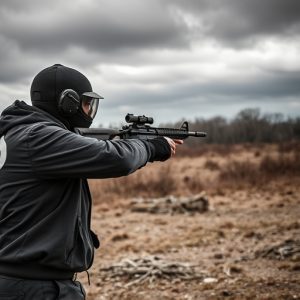Optimizing Tactical Stun Gun Holsters: Considering Neuromuscular Effects for Effective Deployment
The article emphasizes the importance of selecting the right stun gun holster for personal safety an…….
The article emphasizes the importance of selecting the right stun gun holster for personal safety and effective self-defense, highlighting that understanding neuromuscular effects is key. It discusses various holster types (belt, pocket, ankle/wrist) catering to different needs, with a focus on swift access, comfort, and security. Key factors in choosing a tactical holster include design considering neuromuscular effects, durable materials, adjustable fit, and specific application requirements. Effective deployment techniques involve regular training, quick drawing, maintaining safe distances, and assessing the situation before using the stun device's powerful neuromuscular capabilities for optimal self-defense results.
In today’s safety-conscious world, tactical stun gun holsters are a crucial accessory for personal protection. Understanding the neuromuscular effects of stun devices is key to effective holster design, ensuring swift and reliable deployment. This article explores various stun gun holster options, from compact to robust designs, guiding users through selection considerations and best practices for safe and efficient deployment. Key factors such as material strength, draw speed, and comfort are dissected, empowering readers with knowledge on choosing the perfect fit.
- Understanding Neuromuscular Effects of Stun Devices: A Key Factor in Holster Design
- Types of Stun Gun Holsters: An Overview of Popular Options
- Considerations for Effective Tactical Stun Gun Holster Selection
- Best Practices for Stun Gun Safety and Deployment from the Holster
Understanding Neuromuscular Effects of Stun Devices: A Key Factor in Holster Design
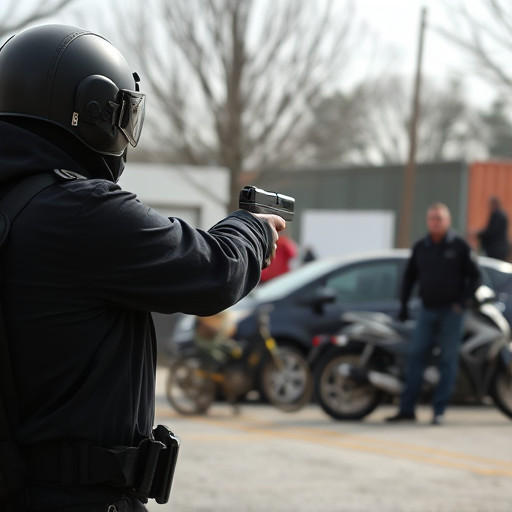
The effectiveness of a stun gun, or electroshock weapon, heavily relies on understanding and leveraging its neuromuscular effects. These devices disrupt muscle control in an individual by depolarizing nerve impulses, leading to temporary paralysis. This unique mechanism is a key factor in designing efficient holsters. By considering how the body responds to such shockwaves, manufacturers can create holsters that optimize both comfort and functionality.
For instance, a well-designed holster should minimize impact on sensitive areas, ensuring the user experiences minimal pain or discomfort during deployment. It should also allow for quick access while maximizing the weapon’s neuromuscular impact, providing an effective non-lethal force option when needed. Thus, holsters tailored to these effects offer not just protection but also tactical advantages in various situations.
Types of Stun Gun Holsters: An Overview of Popular Options
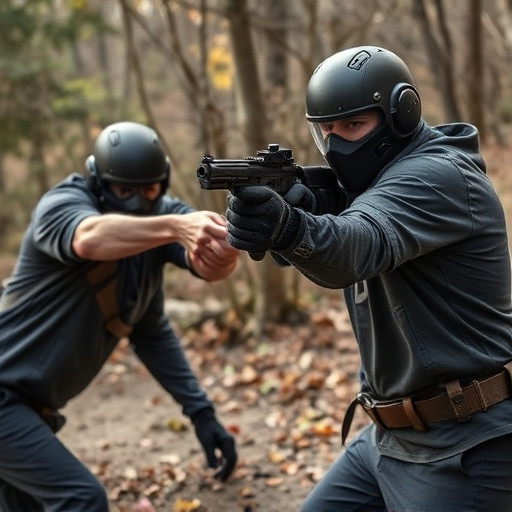
The choice of a stun gun holster is a critical consideration for individuals seeking to ensure their personal safety and carry their self-defense device discreetly and effectively. There are several types of holsters available, each designed to cater to different needs and preferences. Among the popular options are belt holsters, which offer easy accessibility and are ideal for everyday carry; pocket holsters, compact and subtle, suitable for those who prefer a more discrete approach; and ankle or wrist holsters, providing additional mobility and convenience.
Each holster type has unique features that influence user experience and safety. For instance, belt holsters often come with adjustable belts and secure attachment mechanisms, ensuring the stun gun remains in place during various activities. Pocket holsters, on the other hand, prioritize minimalism and discreteness, making them popular among those who want to keep their self-defense tool easily accessible yet hidden from view. Understanding these variations can help users make an informed decision based on their lifestyle, comfort level, and specific requirements, ultimately enhancing their sense of security through the proper selection of a stun gun holster. The neuromuscular effects of stun devices, a key factor in their effectiveness as self-defense tools, are best supported by secure and reliable holster options that ensure swift and easy deployment.
Considerations for Effective Tactical Stun Gun Holster Selection
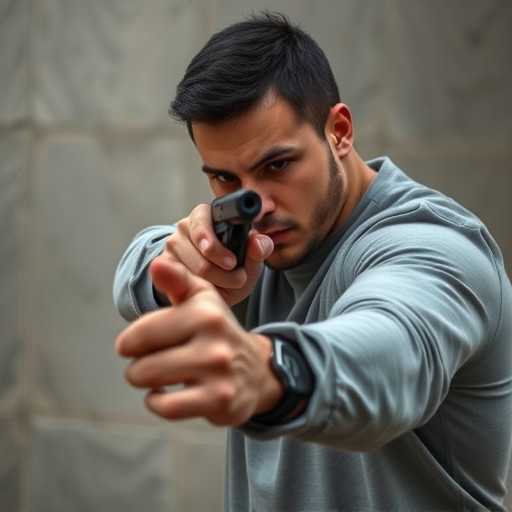
When selecting a tactical stun gun holster, several key considerations come into play to ensure its effectiveness and your safety. The primary focus should be on ensuring swift and easy access to the stun device, especially in high-pressure situations. Look for holsters designed with Neuromuscular Effects of Stun Devices in mind, meaning they are crafted to minimize muscle reaction time and allow for a quicker draw.
Material quality and durability are also vital. A robust holster made from sturdy, wear-resistant materials will withstand the rigors of daily use and various environments. Additionally, consider adjustable fit options that cater to different body types, ensuring comfort and secure retention without hindering movement. Always opt for holsters that align with your specific needs and the intended use, whether it’s for personal protection, law enforcement, or military applications.
Best Practices for Stun Gun Safety and Deployment from the Holster
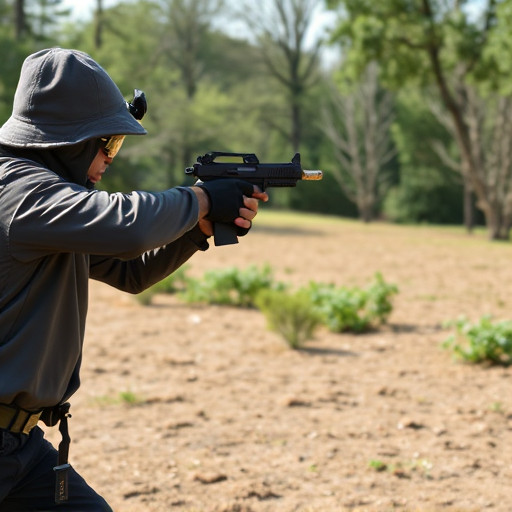
When carrying a stun gun, adhering to best practices for safety and deployment is paramount. Always keep your stun gun holstered when not in use, ensuring it’s readily accessible yet secure. The neuromuscular effects of stun devices, like muscle incapacitation and temporary loss of motor control, make them effective tools for self-defense. However, proper deployment requires a swift and decisive trigger pull. Practice drawing and firing your stun gun from the holster repeatedly to develop smooth, instinctive movements in case of an emergency.
Remember that the impact of a stun gun is not always immediately visible, so it’s crucial to maintain a safe distance and assess the situation before administering the shock. Deploying a stun gun requires split-second timing; keep your finger on the trigger until the target falls to the ground, ensuring maximum effectiveness. Regular training and familiarization with your chosen holster and device will significantly enhance your ability to safely and effectively use your stun gun when needed.
When selecting a tactical stun gun holster, understanding the neuromuscular effects of stun devices is crucial for optimal performance. By considering factors like material durability, draw speed, and ergonomic design, you can ensure a secure fit and swift deployment. Remember that the right holster not only enhances safety but also becomes an integral part of your tactical gear, allowing for quick and effective responses in various situations.

